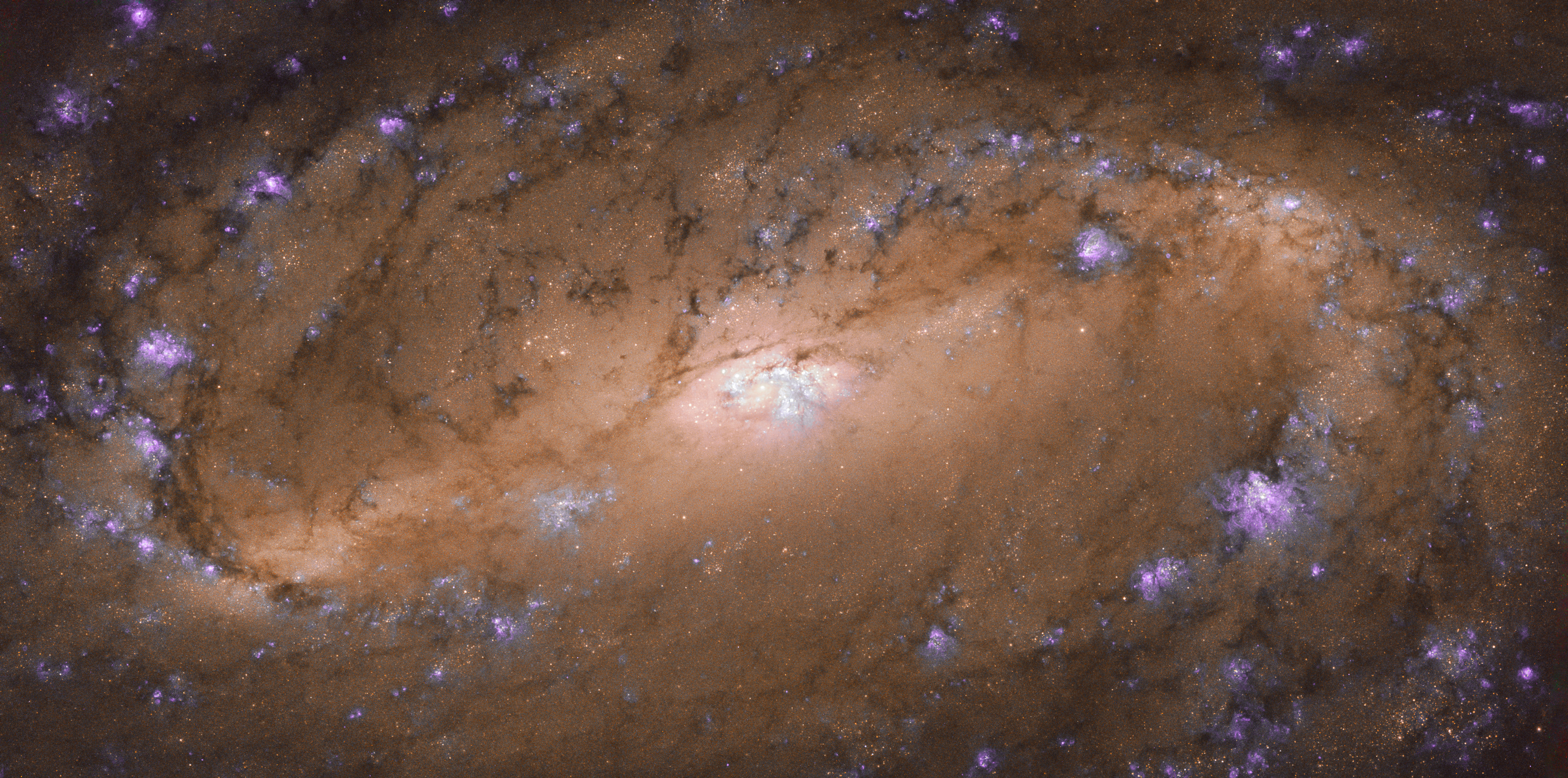哈勃望远镜发现了令人惊叹的螺旋星系
宇宙中很少有居民像螺旋星系那样具有标志性。这些引人注目的天体结合了旋转的旋臂、旋转的旋臂、闪烁的星星的散射、炽热的气体爆发以及黑暗的宇宙尘埃织成的车道,创造了真正令人敬畏的场景——尤其是通过美国宇航局/欧洲航天局的哈勃太空望远镜观察时。事实上,这张哈勃望远镜拍摄的图像构成了一个完美的螺旋标本:令人惊叹的NGC 2903。
NGC 2903位于离我们约3000万光年远的狮子座(狮子座),它是哈勃对附近145个碟状星系中心区域进行调查的一部分。这项研究的目的是帮助天文学家更好地理解潜伏在这些星系核心的黑洞与星系中心的橄榄球球形状的恒星、气体和尘埃膨胀之间的关系,如图所示。
Few of the universe’s residents are as iconic as the spiral galaxy. These limelight-hogging celestial objects combine whirling, pinwheeling arms with scatterings of sparkling stars, glowing bursts of gas, and dark, weaving lanes of cosmic dust, creating truly awesome scenes — especially when viewed through a telescope such as the NASA/ESA Hubble Space Telescope. In fact, this image from Hubble frames a perfect spiral specimen: the stunning NGC 2903.
NGC 2903 is located about 30 million light-years away in the constellation of Leo (the Lion), and was studied as part of a Hubble survey of the central regions of roughly 145 nearby disk galaxies. This study aimed to help astronomers better understand the relationship between the black holes that lurk at the cores of galaxies like these, and the rugby-ball-shaped bulge of stars, gas and dust at the galaxy’s center — such as that seen in this image.
Text credit: ESA (European Space Agency)
Image credit: ESA/Hubble & NASA, L. Ho et al.

